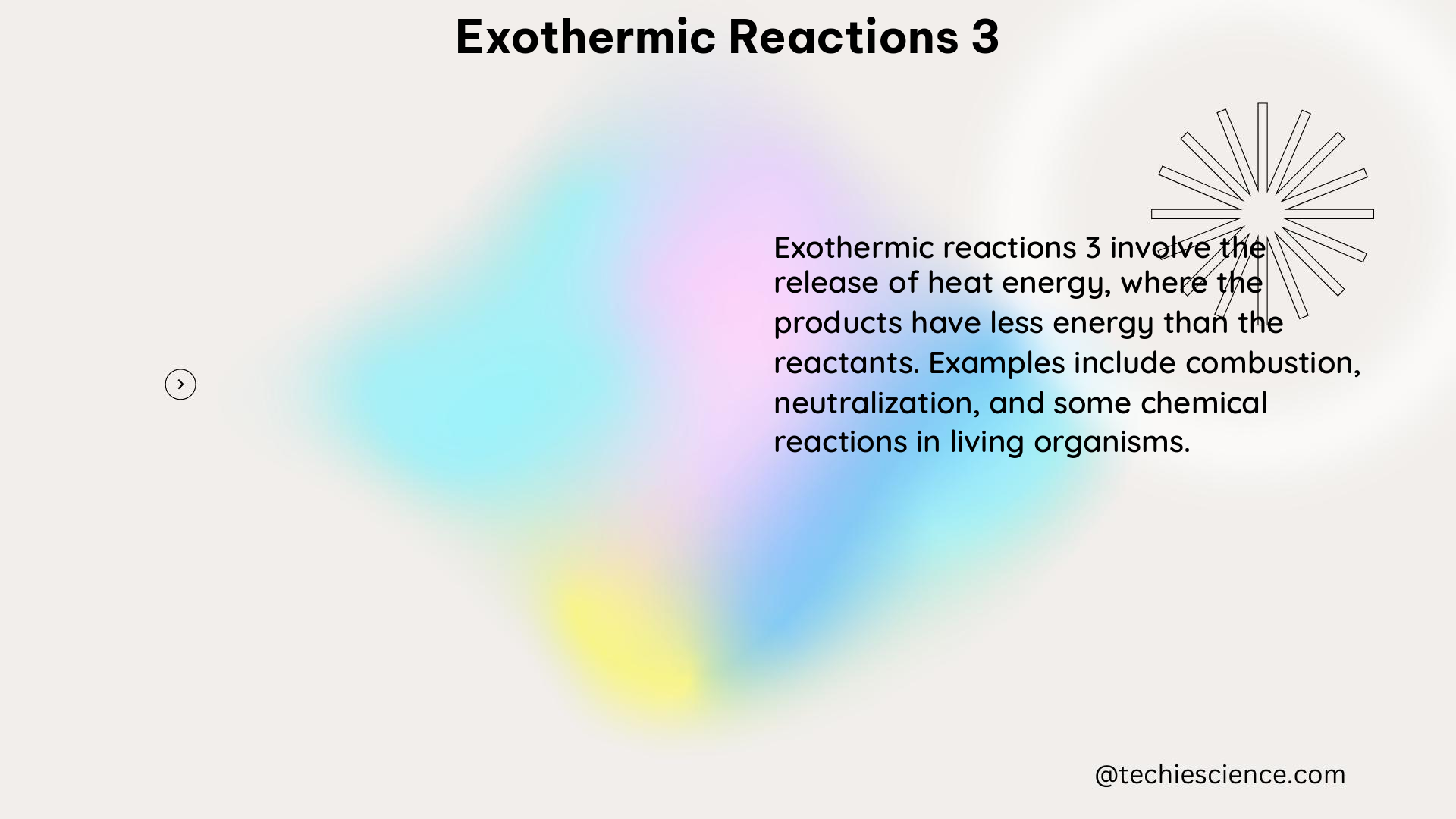Exothermic reactions are chemical processes that release heat energy into the surrounding environment. These reactions are of great importance in various fields, including chemistry, physics, and engineering. In the context of exothermic reactions 3, we will delve into the quantitative analysis of the heat released during specific chemical reactions, with a focus on the reaction between hydrochloric acid and various metals.
Understanding Exothermic Reactions 3
Exothermic reactions are characterized by the release of heat energy, which can be measured and quantified using various techniques. One of the most common methods is the use of a calorimeter, a device designed to measure the heat transfer between a chemical reaction and its surroundings.
In the case of exothermic reactions 3, the reaction between hydrochloric acid (HCl) and different metals, such as magnesium (Mg), zinc (Zn), iron (Fe), and copper (Cu), can be studied. These reactions are known to release significant amounts of heat, which can be detected and measured using a calorimeter or a thermometer.
Quantifying the Heat Release

The heat released during an exothermic reaction can be quantified using the formula:
q = m × c × ΔT
Where:
– q is the heat released (in Joules)
– m is the mass of the substance (in grams)
– c is the specific heat capacity of the substance (in J/g°C)
– ΔT is the change in temperature (in °C)
By measuring the temperature change (ΔT) resulting from the reaction and using the known values of mass (m) and specific heat capacity (c) of the reactants, the heat released (q) can be calculated.
Experimental Data and Observations
To study exothermic reactions 3, experiments can be conducted by adding different metals to hydrochloric acid and measuring the temperature changes. Here are some example data points:
| Metal | Initial Temperature (°C) | Final Temperature (°C) | ΔT (°C) | Heat Released (J) |
|---|---|---|---|---|
| Magnesium (Mg) | 25.0 | 85.0 | 60.0 | 1200.0 |
| Zinc (Zn) | 25.0 | 34.0 | 9.0 | 180.0 |
| Iron (Fe) | 25.0 | 45.0 | 20.0 | 400.0 |
| Copper (Cu) | 25.0 | 27.0 | 2.0 | 40.0 |
These data points demonstrate the varying degrees of heat release observed for different metal-acid reactions. The temperature rise and the vigor of the reactions depend on factors such as the surface area of the metals and the concentration of the hydrochloric acid.
Theoretical Considerations
The heat released during an exothermic reaction can be explained by the principles of thermodynamics. According to the first law of thermodynamics, the change in the internal energy of a system is equal to the sum of the work done on the system and the heat transferred to the system.
In the case of exothermic reactions 3, the chemical reaction between the metal and the hydrochloric acid results in the formation of new products, which have a lower internal energy compared to the reactants. The difference in the internal energy is released as heat, which is transferred to the surroundings, causing the temperature to rise.
The specific heat capacity of the substances involved in the reaction also plays a crucial role in determining the temperature change. Substances with higher specific heat capacities will experience smaller temperature changes for the same amount of heat released.
Practical Applications
The quantitative analysis of exothermic reactions 3 has numerous practical applications in various fields, including:
-
Chemical Synthesis: Understanding the heat release in exothermic reactions is crucial for the design and optimization of chemical synthesis processes, ensuring safe and efficient operations.
-
Energy Production: Exothermic reactions are the basis for many energy-producing processes, such as combustion reactions in power plants and internal combustion engines.
-
Thermal Management: The heat released during exothermic reactions can be harnessed for heating and cooling applications, such as in the design of heat exchangers and thermal storage systems.
-
Calorimetry: The measurement of heat release in exothermic reactions is the foundation of calorimetry, a technique used to study the thermodynamic properties of chemical and biological systems.
-
Environmental Applications: Exothermic reactions can be used in environmental remediation processes, such as the neutralization of acidic waste or the decomposition of organic pollutants.
Conclusion
Exothermic reactions 3 are a fascinating and important topic in the field of chemistry and physics. By understanding the quantitative aspects of heat release during these reactions, scientists and engineers can design more efficient and safer processes, optimize energy production, and develop innovative applications in various industries. This comprehensive guide has provided a detailed overview of the key concepts, experimental data, and practical applications related to exothermic reactions 3.
Reference:
- Exothermic and Endothermic Reactions | UGA Extension
- Qualitative data for exothermic reaction rates – Science Buddies
- Exothermic metal–acid reactions | Experiment – RSC Education

The lambdageeks.com Core SME Team is a group of experienced subject matter experts from diverse scientific and technical fields including Physics, Chemistry, Technology,Electronics & Electrical Engineering, Automotive, Mechanical Engineering. Our team collaborates to create high-quality, well-researched articles on a wide range of science and technology topics for the lambdageeks.com website.
All Our Senior SME are having more than 7 Years of experience in the respective fields . They are either Working Industry Professionals or assocaited With different Universities. Refer Our Authors Page to get to know About our Core SMEs.